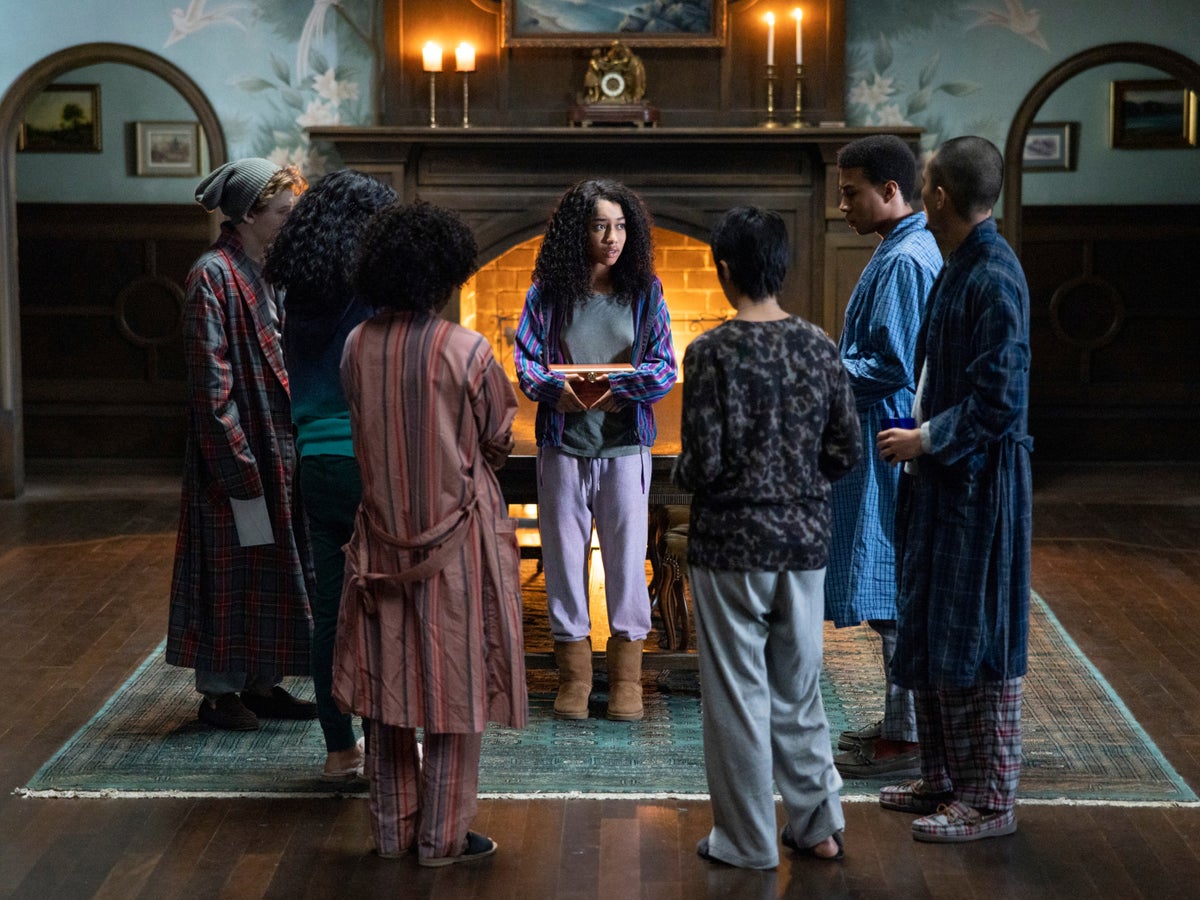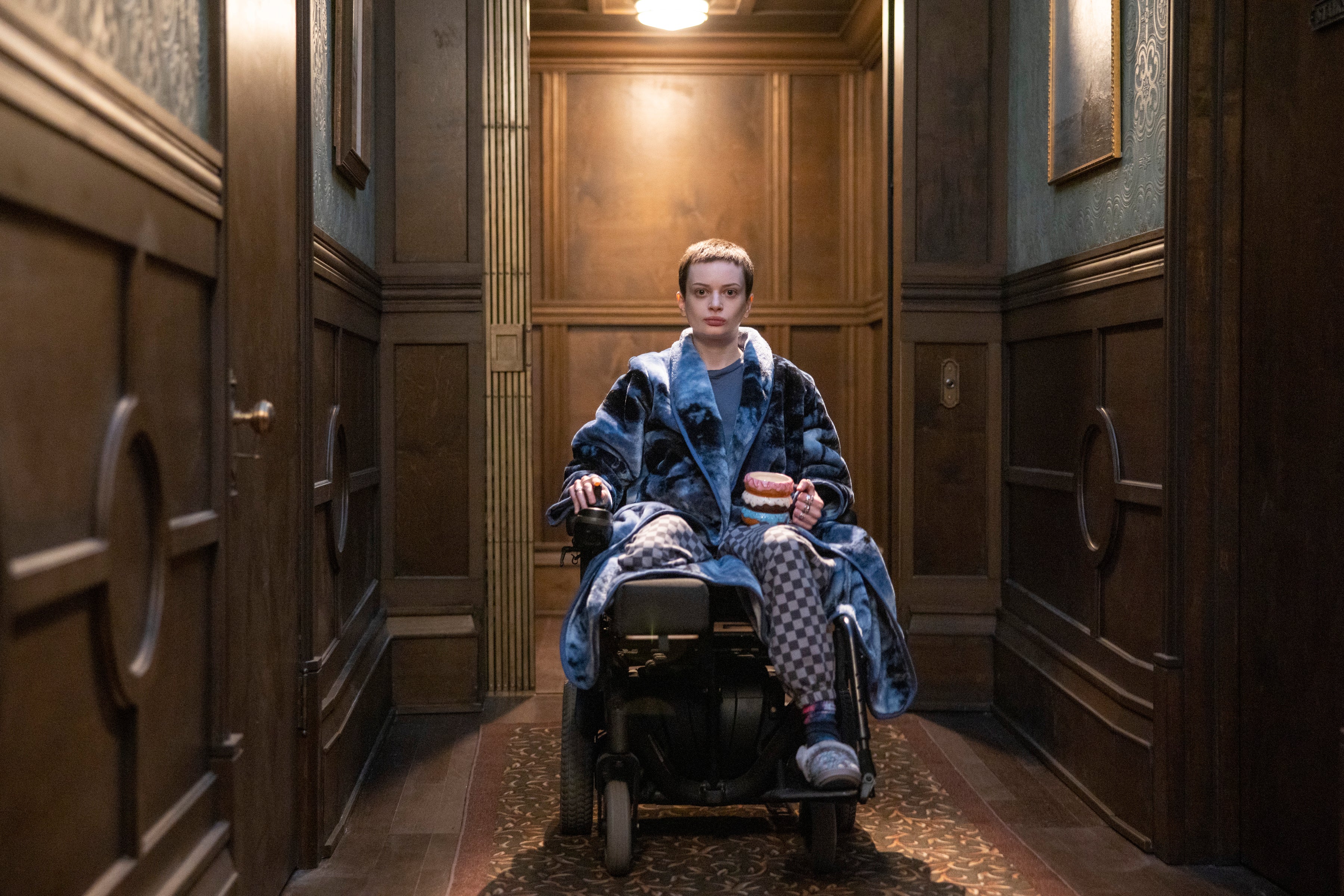
On Netflix’s new horror show, the terrific and terrifying The Midnight Club from scare maestro Mike Flanagan, most of the characters are high school kids. And they are all facing something darker than evil spirits: none have long left to live. They board together at the storied Brightcliffe Manor, a special hospice for terminally ill teens. Despite the house’s sobering purpose, the atmosphere can verge on gleeful. These kids might be dying, but at least here there aren’t any parents nagging them to be a “fighter”.
There’s only two adults on staff (Heather Langenkamp as Brightcliffe’s founder and Friday Night Lights’ Zach Gilford as its nurse practitioner) and just one rule – a 10pm curfew that the patients treat like a suggestion. At midnight, they creep out of their rooms and into the old mansion’s library to trade scary stories and, like teens with longer life expectancies, mercilessly pick on each other.
That includes incisive critiques of one another’s tales. “Startled isn’t the same as scared. Anyone can bang pots and pans behind someone’s head,” spits an HIV-positive kid called Spencer (Chris Sumpter), calling out another club member’s over-reliance on jump scares. “It’s just startling. And it’s lazy as f***,” he adds bitingly. Dying young doesn’t make you an angel.
The Midnight Club feels unfashionably hokey compared to the critically acclaimed heartstoppers that have dominated horror for the past few years. The twisty, atmospheric (and pompously named) “elevated horror” genre has been led by films from Jordan Peele (Get Out), Robert Eggers (The Lighthouse), and Ari Aster (Midsommar). But with The Midnight Club, Flanagan is building on the brand of horror he’s finessed across several Netflix series. His classic genre beats – cat scares, mirror reveals, loud noises – are threaded with earnest existential themes.
Flanagan’s 2018 series The Haunting of Hill House, based on the Shirley Jackson novel, was about the need for belonging. The Haunting of Bly Manor, mostly based on Henry James’s The Turn of the Screw, called itself a “love story”. The Midnight Club, co-created with Once Upon a Time writer Leah Fong and based on Christopher Pike’s 1994 young adult novel of the same name, is his most emotionally captivating series for the streamer yet. It’s Are You Afraid of the Dark? , with the most enduring and universal of existential questions lurking at its heart: what happens to us after we die?
The episodes tend to have two halves. First, we watch the kids as they go about their days, processing the grief of their predicaments in group therapy or brewing antioxidant teas they secretly hope will save them. (To any adult watching, the coexistence of the kids’ pain and hope will be the part they watch through half-covered eyes.) But then they head downstairs for extra-curricular horror therapy. Horror is a genre steeped in metaphor – villains lurk in darkness, disoriented heroes run in the wrong direction – but carved into The Midnight Club is an ambitious, metaphorical case for the genre’s existence. When these kids meet to tell their stories, they’re really divulging their deepest secrets.
In the first episode, Ilonka, a formerly Stanford-bound student with thyroid cancer, tells a scary story about a girl named Julia, who came to Brightcliffe in the 1970s. Julia disappeared into the woods for a few days and returned cancer-free, with the menacing ability to prophesy when the other kids would die. Alexa & Katie star Iman Benson plays Ilonka with competing reserves of fear and pluck, and Julia is a manifestation of the miracle cure she’s still hoping for, long after convincing her foster dad to take her to Brightcliffe. The other patients rag on Ilonka’s storytelling for resorting to the sick kid trope. “We try not to do it here,” someone warns her. “It’s a little masturbatory.”

Other stories work similarly as confessions in disguise. An Irish teen in a wheelchair (an amusingly vicious Ruth Codd) spins a spooky yarn about a girl who splits herself in two in order to get everything she wants. One side is a good girl who does everything right; the other, a bad girl who does as she pleases. Both are punished in the end, because wanting is inherently dangerous at Briarcliffe. Longing is the monster hiding under the bed when you’re a teen in hospice care. For a group of kids united by tragedy, horror becomes a shared language to discuss by night the desires that they daren’t name when the sun is shining.
The group is also bound by a promise: whoever dies next will do everything they can to reach back across the abyss to tell the others what to expect. Even with such short lives ahead of them, these characters can’t help thinking about their shared, imminent future. Or, namely, their lack of one. Death is how the horror story they’ve been living – their terrible medical diagnoses and the brutal treatments that have failed them – finally ends.
But at night, when no adults are watching, they trade the horror stories that set them free.







